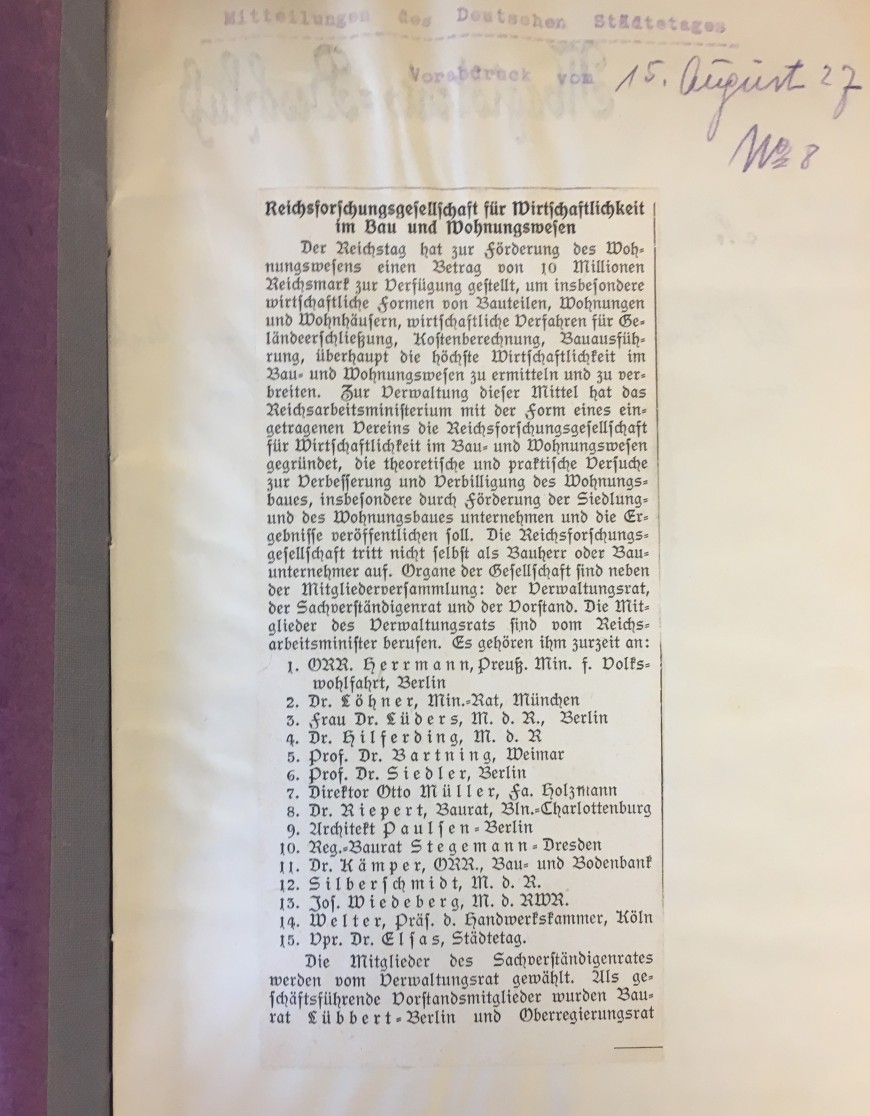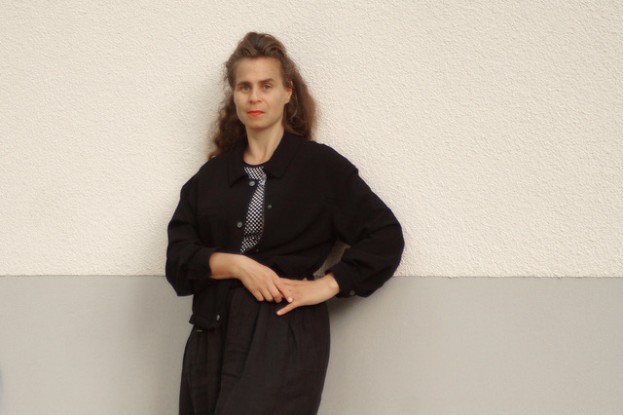“Housewives and Architects”
Marie-Elisabeth Lüders’ Management of the New Architecture From Pot-Lid to Siedlung
In 1926, women’s rights activist Marie-Elisabeth Lüders (1878-1966) gave a speech at the annual meeting of the German Institute for Norms (DIN) right after a talk by architect Walter Gropius' (1883-1969) on “norming and housing shortage.” Claiming the improvement of household regimes as essential to conquer the pressing post-WWI housing shortage and impending economic catastrophe, Lüders saw the mission at hand to be one of an “urgent collaboration” between “producers, traders, housewives and architects, one just like the DIN strives toward.” Her task list named the standardization of pots and pans alongside that of architectural elements such as doors, windows and stairs, rendering the improvement of the household (hence, of female labor) a decidedly architectural challenge—even necessity. As member of the “Reichsforschungsgesellschaft” (a research comittee for cost-efficient building) alongside Gropius, Lüders steered what became known as the modernist “Siedlung” into existence: not as architect, but as managerial expert. This article aims to extend the techno-scientific (and male) histories of both standardization and the New Architecture with a reframing of what constituted “architectural elements” from the viewpoint of the very “housewives” who shaped modern architecture from the pot-lid outward.
Initiative: Prof. Dr. Anna-Maria Meister






